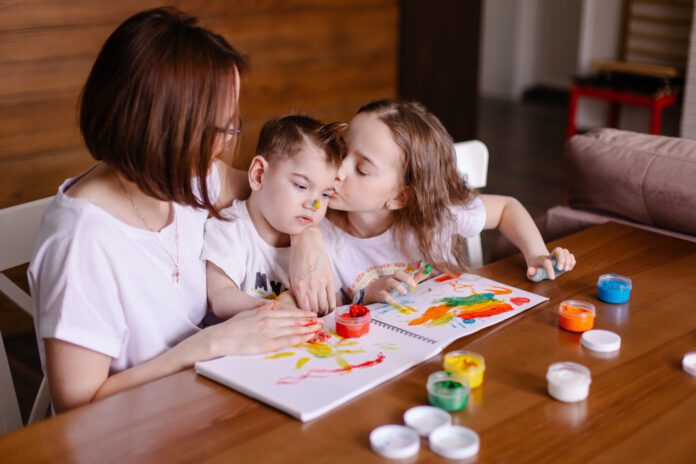Despite the stress of the pandemic, most parents in households with at least one child with special health care needs felt close to their children during this time and did a variety of activities with them, according to a family snapshot survey. But families in these households also experienced several challenges, including high rates of disruption in daycare, health care, and employment, and a loss of technological and therapeutic supports.
The American Academy of Pediatrics (AAP) in collaboration with the Centers for Disease Control and Prevention (CDC), Prevent Child Abuse America (PCAA), and Tufts Medical Center, is surveying a total of 9,000 parents over a period of seven months to measure the impact of the pandemic on family life, adverse childhood experiences (ACEs), and positive childhood experiences. The latest Family Snapshot report seeks to understand the significant impact on families raising children and youth with special health care needs.

Analyzing Disruptions
As noted in an earlier report, a major impact on families during the pandemic has been the disruptions to children’s daily lives. This is especially true for families with children with special health needs. More households with children with special needs indicated disruptions compared to other households (92% vs 74%). Specifically, households with kids with special needs experienced higher rates of disruptions in child care or daycare closings (24% vs 17%); canceled medical or dental appointments (45% vs 25%); and the inability to receive free or reduced-cost meals at school (18% vs 9%).
“Families with children with special health care needs had a particularly hard time during the pandemic,” said Robert Sege, MD, PhD, a pediatrician at Tufts Children’s Hospital and director of the Center for Community-Engaged Medicine at Tufts Medical Center. “Physical distancing meant that, for many families, the therapists that they had depended on were less available, and the loss of in-person schooling may have been even more difficult.”

Families in households with children with special needs experienced financial stress (41%) at a similar rate as other families (37%), the survey found. However, parents who were employed either full-time or part-time before the pandemic, reported a higher percentage of change in employment in households with special needs (61%) compared to other households (46%), indicating that parents from households with special needs were laid off, furloughed, or had reduced work hours at a higher rate.
Fifteen percent of parents of children with special needs reduced their work hours to care for children or family, and female parents were more likely to reduce work hours compared with males (19% v 11%). The number of parents in households without children with special needs reducing work hours to care for children or family was slightly lower at 10%.

Other Findings
- Most parents in households with children with special needs enjoyed positive experiences with their children. Similar to households without children with special needs, parents in households with at least one child with special needs had done a variety of activities with their children in the seven days prior to taking the survey, including watching TV or other media together (72%), cooking together (63%), and engaging in educational activities (53%). In addition, 71% of these parents have felt quite close or extremely close to their children since the start of the pandemic.
- Parental stress was associated with accessing certain services. Those who reported feeling nervous or stressed most/all the time were more likely to have accessed mental/behavioral health or social work services for their child during the pandemic compared with those who did not report these feelings (42% vs 31%).
- The number of parents in households with children with special needs reporting family violence was higher than parents in households without children with special needs. More parents in households with at least one child with special health care needs reported intimate partner violence during the pandemic compared with other households (physical and/or emotional intimate partner violence: 30% vs 17%), physical partner violence (17% vs 7%), and emotional partner violence (26% vs 15%).
“When pediatricians work with these families, it makes sense to ask about how they have coped, and to be on the lookout for lasting problems for both children and adults in the family,” Dr. Sege said.
Source: American Academy of Pediatrics






